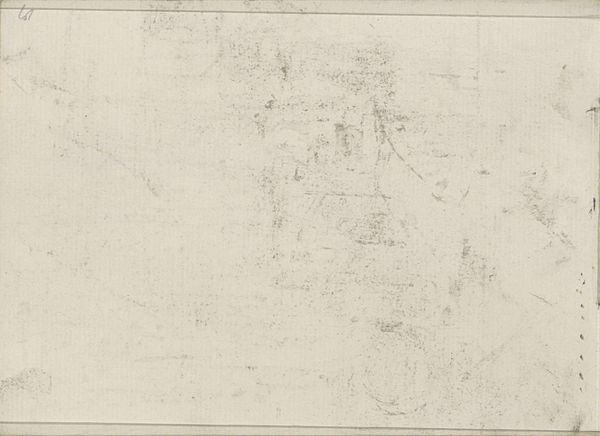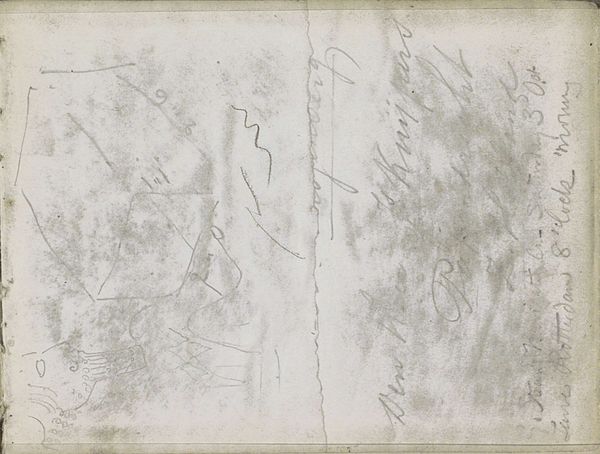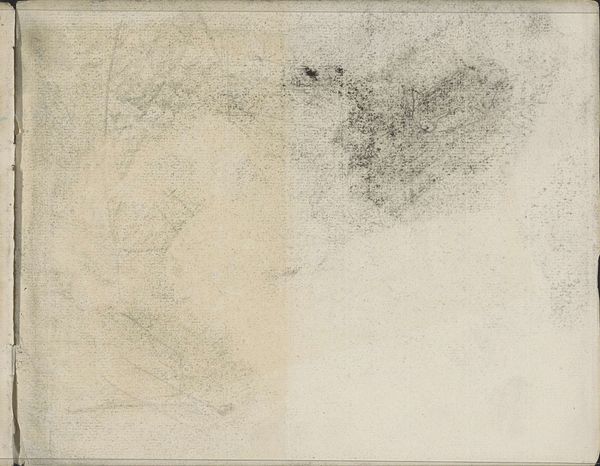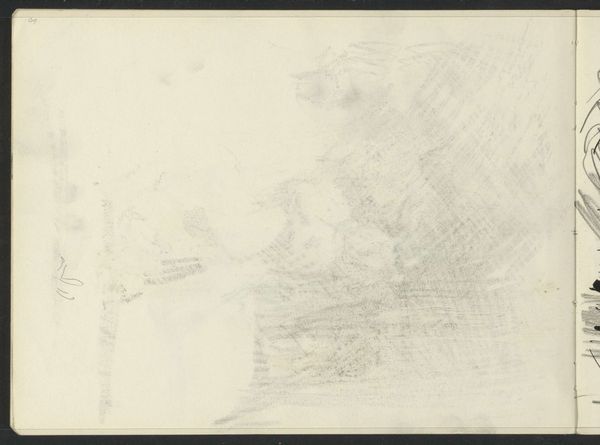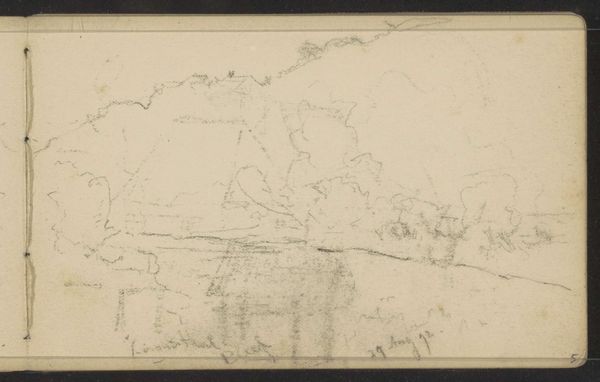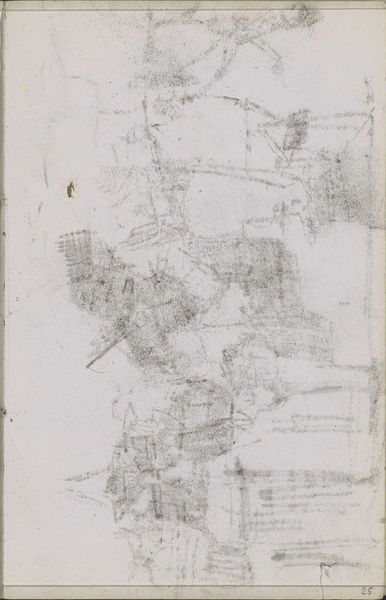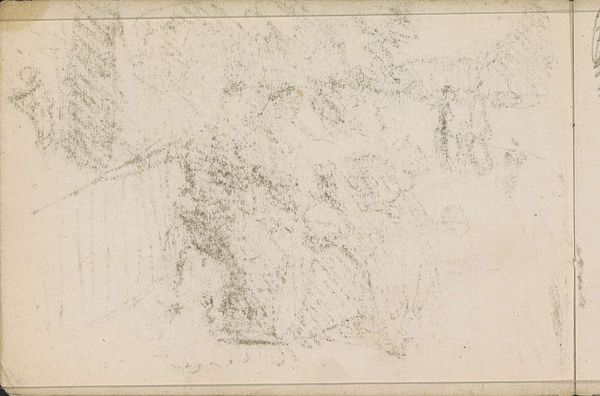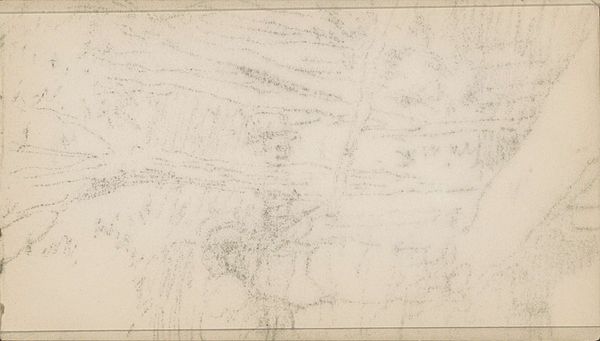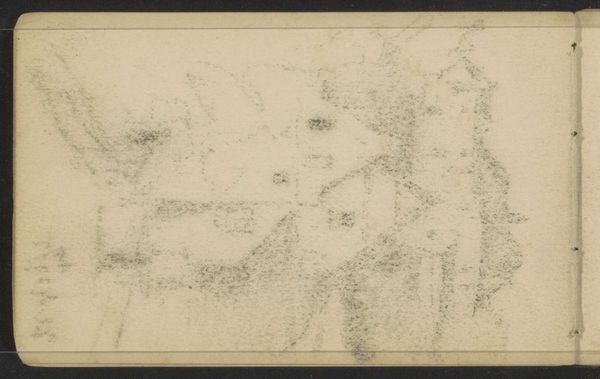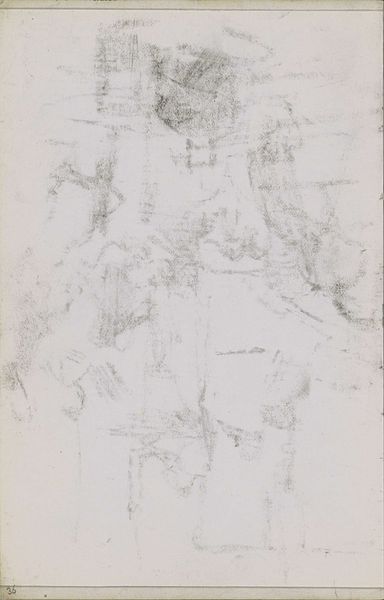
#
amateur sketch
#
toned paper
#
incomplete sketchy
#
hand drawn type
#
personal sketchbook
#
underpainting
#
detailed observational sketch
#
sketchbook drawing
#
sketchbook art
#
watercolor
Copyright: Rijks Museum: Open Domain
Editor: This is "Figuurstudies," or "Figure Studies," by Isaac Israels, dating between 1875 and 1934. It looks like a page from a sketchbook, with very faint pencil or watercolor marks. It’s so subtle, almost ghost-like. I’m wondering, what can you tell me about this kind of preliminary drawing, beyond it being a study? Curator: Well, the first thing to acknowledge is that sketchbooks offer invaluable insight into the artistic process. But think about the institution exhibiting a sketchbook page: how does the context of display alter the viewer’s perception? What was initially private and exploratory suddenly becomes public and potentially ‘finished,’ doesn't it? Editor: That’s a great point. So, by putting this in the Rijksmuseum, are we essentially legitimizing what might have been just practice? Curator: Precisely. Israels' quick, impressionistic style translates well to the finished painting, but also, the rise of art education in this period institutionalized ‘the sketch’ as a necessary stage for creating a finished history painting, thus also contributing to its desirability for collectors. We begin to see even unfinished works framed, shown, and bought as artworks, showing a shift in values where process trumps product. How does knowing that potentially shape our experience of this piece? Editor: It really makes you think about how we define ‘art’ and how that definition can shift based on cultural values and where it is displayed. That almost makes the institution an active participant. Curator: Absolutely! It's not merely a display space, but a stage upon which these debates are played out. So the next time you’re in a gallery, ask not only ‘what is art’, but also, 'what is *not* art?', and why does it end up in the museum? Editor: That's a perspective shift that really opens up new avenues for understanding art! Thanks!
Comments
No comments
Be the first to comment and join the conversation on the ultimate creative platform.


